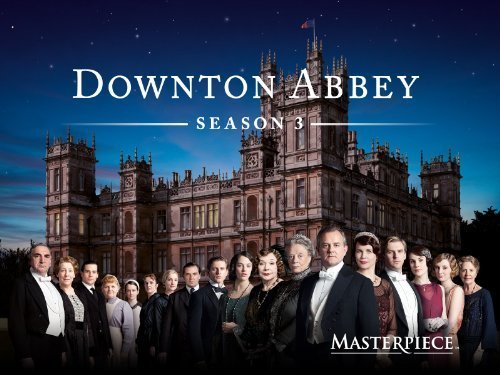Bathroom Readers' Institute's Blog, page 92
January 29, 2016
Life in the Year 1973
A look at life in the not-so-distant (but it sure seems like it!) past.
World population: 3.9 billion (2014: about 7.2 billion)
Average life expectancy in the U.S.: 71.4 (2014: 78.7)
Average annual income: $12,900 (minimum wage: $1.60 per hour)
Average cost of a…

new home: $32,500
new car: $3,200
gallon of milk: $1.31
gallon of (reg.) gas: $0.40
first-class stamp: $0.08
Television:
Shows that ended their runs in 1973: Bonanza, Laugh-In, Mission Impossible, The Mod Squad
Shows that premiered in 1973: Kojak, Barnaby Jones, Schoolhouse Rock, Police Story, The Young and the Restless
Highest-rated shows of the year: All in the Family, The Waltons, Sanford and Son, M*A*S*H, Hawaii Five-O

Movies:
Top-grossing films: 1. The Sting; 2. The Exorcist; 3. American Graffiti; 4. Papillon; 5. The Way We Were
Other notable films: Soylent Green, Enter the Dragon, Mean Streets, Serpico, Day of the Jackal, Sleeper, Paper Moon
Sports:
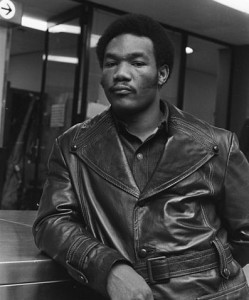 George Foreman is the heavyweight boxing champion.
George Foreman is the heavyweight boxing champion.The Miami Dolphins win Super Bowl VII.
The Oakland Athletics win the World Series.
The New York Knicks win the NBA Finals.
The Indiana Pacers win the ABA Finals.
The Montreal Canadiens win the Stanley Cup.
Jack Nicklaus is the PGA money leader.
Secretariat wins horse racing’s Triple Crown.
Music:
Top five hits: 1. Tie a Yellow Ribbon (Tony Orlando and Dawn), 2. Bad, Bad Leroy Brown (Jim Croce), 3. Killing Me Softly (Roberta Flack), 4. Let’s Get It On (Marvin Gaye), 5. My Love (Paul McCartney and Wings)
Notable album releases: Dark Side of the Moon (Pink Floyd), Houses of the Holy, (Led Zeppelin), Quadrophenia (the Who), Innervisions (Stevie Wonder), There Goes Rhymin’ Simon (Paul Simon), Good-bye Yellow Brick Road (Elton John)
News:
After 12 years, the U.S. ends all military operations in Vietnam.
The Supreme Court makes its landmark Roe v. Wade ruling, making abortion, with some exceptions, legal.
The 1973 oil crisis begins. Oil-producing Arab nations cease exports, causing oil prices to soar, setting off a worldwide energy and economic crisis.
Chilean president Salvador Allende is overthrown in a coup later revealed to have been aided by the CIA.
Construction is completed on the world’s tallest building: the World Trade Center.
The Watergate scandal, the roots of which were first uncovered in 1972, blows wide open. President Richard Nixon gives his famous “I am not a crook” speech in November. (Less than a year later, he resigns in disgrace.)
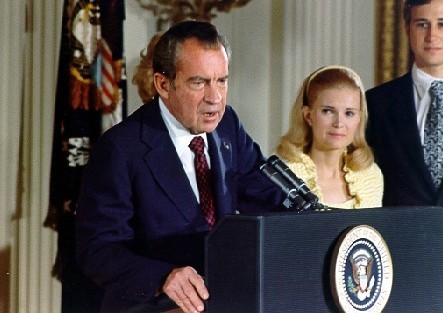
Science News:
Skylab, the first American space station, is launched.
The American Psychiatric Association officially declares that homosexuality is not a “mental disorder.”
The first handheld mobile phone call is made by Motorola engineer Martin Cooper on April 3.
The Oldsmobile Toronado becomes the first car offered to the public with airbags.
Deaths:

Bruce Lee, Bobby Darin, Veronica Lake, Gram Parsons, Jim Croce, Edward G. Robinson, Betty Grable, Lon Chaney Jr., Noel Coward, J. R. R. Tolkien, Lyndon Johnson, Pablo Picasso
Births:
Seth MacFarlane, Adrien Brody, Tori Spelling, Juliette Lewis, Heidi Klum, Neil Patrick Harris, Pharrell Williams, Kate Beckinsdale, Dave Chappelle, Tyra Banks, Ichiro Suzuki, Monica Lewinsky
New Books:
The Princess Bride by William Goldman, Burr by Gore Vidal, Gravity’s Rainbow by Thomas Pynchon
The post Life in the Year 1973 appeared first on Trivia Books and Facts | Uncle John's Bathroom Reader.
January 28, 2016
3 Stars Who Left Their Big Hit TV Shows
These stars jumped ship at maybe not the best time.
Dan Stevens
Downton Abbey, a British soap about aristocrats and their servants at a great house in Yorkshire, was a surprise hit when it aired on PBS. In fact, it was the most watched drama in network history. The central relationship was the will they/won’t they between Lady Mary (Michelle Dockery) and Matthew Crawley (Stevens), a lawyer and distant cousin set to inherit the titular estate. In season 3, they finally married and had a child. That’s when Stevens opted not to renew his contract, wanting instead to play other roles. Matthew’s character was, well, unceremoniously done away with, and Stevens went on to star in flops like Vamps, The Cobbler, and The Fifth Estate.
Wayne Rogers
When Rogers was cast on the TV adaptation of M*A*S*H in 1972 (taking on the role of Trapper John, played in the film by Elliott Gould), he was told he’d be the co-lead, along with Alan Alda, who portrayed Hawkeye Pierce. But Alda quickly became the breakout star, and Rogers’ lines and stories gradually decreased. Rogers finally walked away from M*A*S*H in 1975 and went…right back into TV. He starred in a string of made-for-TV movies, and then the 1979-82 sitcom House Calls. M*A*S*H lasted until 1983—even longer than House Calls. After that Rogers acted sporadically and became a successful financial adviser. (And he kept appearing on TV—on cable news shows as a money expert.)

Mischa Barton
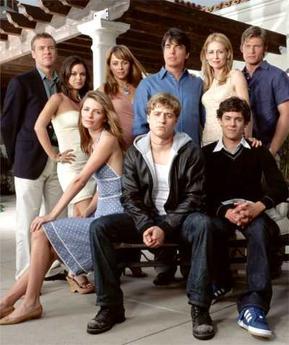 After a stint as a child actress in movies like Notting Hill and The Sixth Sense, 17-year-old Mischa Barton was cast on Fox’s teen soap The O.C. in 2003. The show was a huge hit, and Barton became the show’s most recognizable cast member—Glamour and Entertainment Weekly both named her the biggest new star of the year. But in 2006, Barton asked to leave the show, partially because she felt she had done everything she could with her character, a spoiled rich girl, and partially to pursue a movie career. That career consisted of B-movies like Assassination of a High School President. In 2009, Mischa Barton returned to TV soaps with The Beautiful Life, which was cancelled after two episodes.
After a stint as a child actress in movies like Notting Hill and The Sixth Sense, 17-year-old Mischa Barton was cast on Fox’s teen soap The O.C. in 2003. The show was a huge hit, and Barton became the show’s most recognizable cast member—Glamour and Entertainment Weekly both named her the biggest new star of the year. But in 2006, Barton asked to leave the show, partially because she felt she had done everything she could with her character, a spoiled rich girl, and partially to pursue a movie career. That career consisted of B-movies like Assassination of a High School President. In 2009, Mischa Barton returned to TV soaps with The Beautiful Life, which was cancelled after two episodes.
The post 3 Stars Who Left Their Big Hit TV Shows appeared first on Trivia Books and Facts | Uncle John's Bathroom Reader.
Odd Body Tips and Tricks
Some strange tips sent in by readers who swear they work. (These were not tested in the Uncle John’s Laboratories.)
About to sneeze?
Push the tip of your tongue upward against the roof of your mouth where the hard palate ends and the soft palate begins (between your back teeth).
Chopping an onion?
Avoid the tears by lighting a candle. The heat will attract (and burn) the sulfide fumes.

Stop the gag reflex
Clenching your thumb in your fist.
Lost your car?
If you have a remote control to unlock the doors, hold it under your chin and press the button that beeps the horn. The shape of your skull intensifies the radio signal. Open your mouth, and the signal will go even farther.
Have a small burn?
Press on the spot with your finger. The best way to avoid blisters is to return the burned spot to its normal temperature quickly. (But it won’t stop the pain.)
Leg fall asleep?
Change the position of your hip to adjust the blood flow to your lower body. End pins and needles in your hands by shaking your head. It loosens the pressure on nerves in your neck.
Keep an injection from hurting
Press on the spot where you’re about to get the needle. By overloading the nerve endings in that area, you deaden the pain.
Getting a shot?
Coughing during the injection will ease the pain by putting pressure on the spinal canal, making it harder for the pain message to reach your brain.
For a toothache
ub some ice on the back of your hand between the thumb and index finger. There’s a nerve cluster there that affects pain sensations in the face and hands.
“Brain freeze”
Occurs when the nerves in the back of your mouth suddenly get very cold, giving you a brief (but strong) headache. A quick way to stop it is to warm the nerve endings by drinking a glass of water (no ice).

The post Odd Body Tips and Tricks appeared first on Trivia Books and Facts | Uncle John's Bathroom Reader.
January 25, 2016
TV Facts: The 1970’s
This page isn’t a rerun—these facts are about shows from the 1970s.
T he Partridge Family
Despite being a fictional band with songs performed almost entirely by studio musicians, the Partridge Family was nominated for Best New Artist at the 1971 Grammy Awards. (They lost to the Carpenters.)

All in the Family
Today, many shows carry a “mature themes” warning, but All in the Family was the first, in 1971. The sitcom’s first six episodes had a disclaimer to warn viewers that they were about to hear racist (although satirical) dialogue from Archie Bunker.
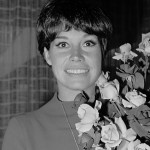 The Mary Tyler Moore Show
The Mary Tyler Moore Show
Moore’s character, Mary Richards, was originally written as a divorced woman. CBS nixed that, worried that divorce was too controversial (it was 1970) and that audiences might think she was still playing her character on The Dick Van Dyke Show…and that she’d divorced Rob Petrie.
Kojak
Some TV cops smoked cigarettes, but Lt. Theo Kojak (Telly Savalas) sucked on lollipops. Reason: As the series began shooting in 1973, Savalas was trying to quit smoking and was using lollipops as a substitute. Kojak writers incorporated it into his character.
WKRP in Cincinnati
There were lots of Saturday-morning cartoon versions of popular 1970s sitcoms, such as Mork and Mindy, Laverne and Shirley, and Happy Days. Hanna-Barbera Productions also proposed a cartoon version of WKRP in which all the main characters…were dogs. (It never got past the planning stage.)
The Dukes of Hazzard
Half of all the hundreds of fan letters the show received each week were addressed to “General Lee.” That’s not an actor; it’s the orange, Confederate flag-adorned 1969 Dodge Charger driven by Bo and Luke Duke.

The Odd Couple
Neil Simon wrote the play The Odd Couple, but not the 1968 movie version on which the TV series was based. After the first season, he asked that his name be dropped from the series’ title, Neil Simon’s The Odd Couple. He eventually came to like the series and even appeared on the show once…weirdly, as himself.
The post TV Facts: The 1970’s appeared first on Trivia Books and Facts | Uncle John's Bathroom Reader.
January 22, 2016
Basket Cases: NBA Team Name Origins
Some of your favorite NBA teams almost ended up with these names.
Orlando Juice
Orlando, Florida, scored an NBA expansion team in 1987. Naming it was put to a vote in the Orlando Sentinel. Of the 4,300 entries, four finalists were selected by the team’s owners: Heat, Tropics, Juice, and Magic. They decided on Juice, alluding to the area’s orange groves…until a team executive’s seven-year-old daughter remarked after a trip to Orlando that “This place is like magic.” Magic it was.
Chicago Matadors
Original owner Dick Klein wanted the city’s NBA team to have a name that alluded (indirectly) to its meatpacking district, and his original idea was the Matadors. He nixed it when research showed that the only pro sports team with a three-syllable (or longer) name that had any lasting success was the NHL’s Montreal Canadiens. So he picked a one-syllable name: Bulls.
New Orleans Rougarou
The Charlotte Hornets kept their name when they moved to New Orleans in 2003. But in 2012 the team announced it would change its name and filed trademarks for five possibilities: Mosquitos, Bull Sharks, Swamp Dogs, Pelicans, and Rougarou. What’s a Rougarou? It’s a mythical werewolf said to reside in the swamps of New Orleans. In the end, the team went with the Pelicans, after Louisiana’s state bird.
Oklahoma City Wind
The Seattle SuperSonics moved to Oklahoma City in June 2008. (It cost them $45 million to get out of their lease on Seattle’s KeyArena.) With just four months to come up with a new name in time for the 2008–09 season, owners considered Marshalls and Bison, reflecting the city’s Wild West heritage, but ultimately wanted a weather word. Result: they rejected Wind and selected Thunder.
Miami Vice
The NBA expanded into Miami in 1987. A number of names were suggested in a fan vote, with the finalists being the Sharks, Barracudas, Beaches, Flamingos, and Heat, which was the final selection. However, owners almost went with another finalist, a reference to something else Miami is known for: Vice, as in Miami Vice, the 1980s NBC crime drama.
The post appeared first on Trivia Books and Facts | Uncle John's Bathroom Reader.
Origins You Can Eat
Did John D. Rockefeller ever eat oysters Rockefeller? Here’s how some tasty foods got their names.
Bananas Foster
Richard Foster was the chairman of the New Orleans Crime Commission in the early 1950s and a friend of restaurateur Owen Brennan, who also served on the commission. Foster must have loved bananas, because in 1951 Brennan had his chef, Paul Blangé, whip up this dessert—bananas cooked flambé in rum, butter, and banana liqueur, served hot with a scoop of vanilla ice cream— and then named it in Foster’s honor.

Sachertorte
In 1832 Austrian chancellor Prince Klemens von Metternich was expecting several important guests for dinner and asked his head chef to come up with a special dessert for the occasion. The chef took sick before he could think of anything, so the task fell to a 16-year-old apprentice named Franz Sacher. The dessert he came up with, a chocolate sponge cake layered with apricot jam and covered with chocolate icing, was a simple and delicious departure from the elaborate desserts of the day. It wasn’t until Sacher finished his training as a cook that he began selling his creation to the public. Once he did, “the cake by this man Sacher” soon became the signature dessert of Viennese cuisine.
Oysters Rockefeller
It’s not clear that John D. Rockefeller ever ate oysters Rockefeller or even knew that they existed. What is clear is that when fancy French snails were in short supply in 1899 and a New Orleans restaurateur named Jules Alciatore replaced them with a dish of local oysters served on the half-shell topped with bread crumbs and a secret sauce, he wanted a name that let diners know that the oysters were every bit as classy as the snails. So he named them after John D. Rockefeller, the founder of Standard Oil and the richest man in the world. Antoine’s, the restaurant that introduced the dish in 1899, is still in business more than a century later. It still serves the oysters, and the recipe remains a closely guarded secret to this day.
The post Origins You Can Eat appeared first on Trivia Books and Facts | Uncle John's Bathroom Reader.
January 21, 2016
6 Truths About Dr. Ruth
Here are some pint-sized facts about the world’s most famous pint-sized sex therapist.
Karola Ruth Siegel (Westheimer is her married name) was born into an Orthodox Jewish family in Germany in 1928. At age 12, Ruth was sent to safety at an orphanage in Switzerland. She never saw her family again; her parents are believed to have been killed at Auschwitz.
At age 16, she made her way to Palestine, joined a military organization, and trained to be a sniper. Her military career was cut short at age 20 when an artillery shell hit her Jerusalem dormitory. Ruth was so badly injured that doctors believed she might never walk again. But she recovered, and went to Paris to study psychology at the Sorbonne. She immigrated to the U.S. in 1956 and took a job at a Planned Parenthood clinic in New York City. At first, her colleague’s frank discussions about women’s health issues shocked her but, eventually, they inspired her to pursue a new career. Her post-doctoral work in human sexuality led her to open her own practice in 1975.
Five years later, Betty Elam, an executive at New York City radio station WYNY, was faced with finding new talent after a switch to an all-talk format. She heard Ruth speak at a convention and was impressed with her ability to intelligently discuss a sensitive subject with warmth, honesty and, humor. In Sept. 1980, Dr. Ruth began hosting Sexually Speaking, a 15-minute show on Sunday nights at midnight.
Audiences loved Dr. Ruth, in part because of her novelty—a woman in her 50s, speaking confidently and frankly about a taboo subject, and in a high-pitched German accent. (The Wall Street Journal described Ruth’s voice as a “cross between Henry Kissinger and Minnie Mouse.”) The diminutive doctor (she’s 4’7”) quickly became a cultural juggernaut.
Sexually Speaking was extended to an hour so Dr. Ruth could take calls from listeners. Within a few years, 78 radio stations across America were broadcasting the show. Dr. Ruth spent the ‘80s hosting the show and writing a syndicated newspaper advice column, as well as writing books, producing a Dr. Ruth board game, and making countless talk show appearances. On The Tonight Show, she jokingly told Johnny Carson, “You are responsible for the problems Americans have in their bedroom. They stay up to watch you and then they are too tired!”
Dr. Ruth is widely credited for ushering in an era of freer, and more honest discussion of sexuality. This is especially important as Dr. Ruth’s rise to fame occurred at the same time as the early AIDS crisis. In 2009, Playboy placed Dr. Ruth at #13 on its list of “The 55 Most Important People in Sex From the Past 55 Years.”
The post 6 Truths About Dr. Ruth appeared first on Trivia Books and Facts | Uncle John's Bathroom Reader.
TV facts: the 2000s
Stuff you didn’t know about the stuff on your TiVo.
The Office
In 2009 producers planned to spin off Andy Bernard (Ed Helms) to his own show. Following the same “mockumentary” format, the show was set to be about Bernard’s home life with his wife. Why didn’t it happen? Because Modern Family happened, and it used virtually the same premise.
Breaking Bad
Jesse Pinkman (Aaron Paul) was supposed to die at the end of the first season. The 2007–08 writers’ strike shortened the season prematurely, which gave creator Vince Gilligan time to realize there was a lot more he could do with the character. Pinkman remained on the show until the end; Paul won two Emmys.

Game of Thrones
George R. R. Martin’s books contain a few words of the fictional “Dothraki” language, but when HBO adapted the books into a TV series, linguist David J. Peterson was hired to expand it into a speakable language. Peterson developed more than 3,000 words and phrases, used extensively on the show (all subtitled).
Two and a Half Men

Highest-paid actor on a sitcom: Ashton Kutcher, at $750,000 per episode of Two and a Half Men. Second highest: Jon Cryer, at $650,000 per episode of the same show.
How I Met Your Mother
Alyson Hannigan starred on the series. Former Full House star Bob Saget was also on the show, as an unseen, uncredited narrator. In the late 1980s, Hannigan was the regular babysitter for Saget’s children.
Arrested Development
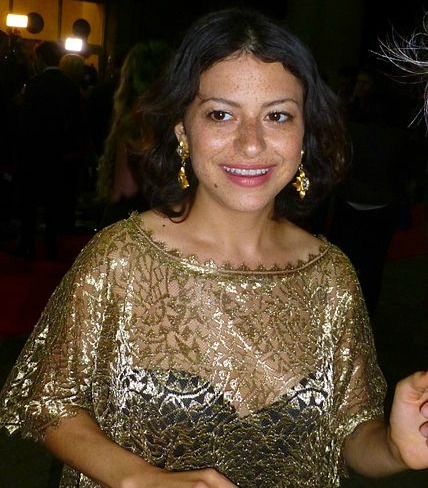
Creator Mitchell Hurwitz got the name for Maeby Funke (Alia Shawkat)—a reference to a running joke that she was “maybe” adopted—by combining the names of his daughters: the “ma” from Maisie; the “be” from Phoebe.
The West Wing
In the Roosevelt Room of the real White House, Teddy Roosevelt’s portrait is traditionally hung during Republican administrations; FDR’s portrait is hung during Democratic administrations. In The West Wing’s Roosevelt Room, portraits of both presidents are visible. (Producers didn’t want the show to seem partisan.)
The post TV facts: the 2000s appeared first on Trivia Books and Facts | Uncle John's Bathroom Reader.
January 18, 2016
Super Bowl Host City Requirements
Los Angeles will soon have one (or potentially two) NFL teams. It will be a prime location for hosting Super Bowls. In 2013 a newspaper reporter uncovered the NFL’s “Host City Specifications and Requirements,” a confidential 153-page list of the league’s demands for any city bidding to host the Super Bowl. Here are a few items on the list.
Sixteen months before the game, the NFL will send 180 people to the host city for a “familiarization trip” to inspect the region. The host city must cover all the expenses.
Hotels where players stay must carry the NFL Network on their cable TV systems for a year prior to the Super Bowl.
The host city must give the NFL the use of at least 20 billboards at no charge.
The city must cover the expense of providing the NFL with a task force devoted strictly to busting game-ticket counterfeiters.
The NFL must be allowed to install ATMs in the stadium that accept “preferred” credit and debit cards. The league may also cover up or remove ATMs belonging to other banks if they wish to do so.
If cell phone signal strength at the team hotels is too weak, the host committee must install boosters or erect portable cell towers.
In the event of a snow or ice storm on game day, the city must give priority to the NFL “over all other ice and snow removal projects” (except in the case of threats to public safety).
On game day, the NFL gets access to 35,000 parking spots near the stadium at no cost.
The league requires exclusive access to three area golf courses (at no cost) so it can host a tournament on Super Bowl weekend.
The NFL also requests the use of two “top quality” bowling alleys (at no cost) for a bowling tournament the Wednesday before the Super Bowl.
After the game, the host city must remove the playing field at its own expense, and, if the league requests it, give those pieces of green back to the NFL so it can sell them as “licensed products.”
The post Super Bowl Host City Requirements appeared first on Trivia Books and Facts | Uncle John's Bathroom Reader.
4 Cartoon Versions of Live-Action Sitcoms
We recently told you about some arguably inappropriate cartoon remakes of R-rated movies, but here are some that make a little more sense: Saturday morning version of kid-friendly sitcoms.
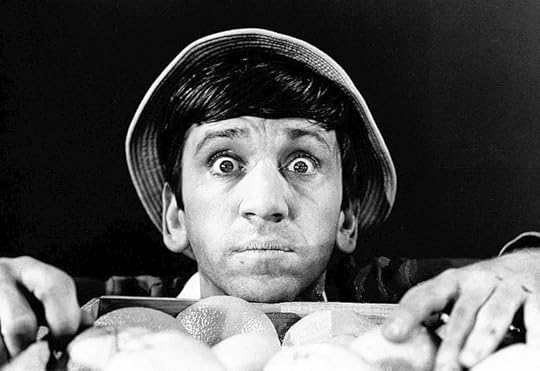 Gilligan’s Planet
(1982-83)
Gilligan’s Planet
(1982-83)Gilligan’s Island was not a big hit when it originally aired from 1964-1967, but became a smash when it was endlessly repeated in reruns on local stations, often in after-school time slots. That’s why in 1982, CBS premiered a Saturday morning take called Gilligan’s Planet. Instead of being lost on an island, Gilligan, the Skipper, and the rest are lost in space.
It’s Punky Brewster (1985)
NBC had a hit family sitcom in the mid-’80s with Punky Brewster, which starred Soleil Moon Frye as an abandoned little girl who goes to live with a grumpy old man. While that show was grounded in reality, the cartoon version was not. Punky and her friends meet a magical leprechaun/creature named Glomer who transported them through space and time.
The Fonz and the Happy Days Gang (1980-81)
Happy Days was a cultural phenomenon. The #1 show on TV, it spawned spinoff hits like Laverne and Shirley and Mork and Mindy and made huge stars out of Ron Howard and Henry Winkler, as the iconic Fonzie. (Fonzie was so popular that Happy Days almost had its name changed to Fonzie’s Happy Days.) Kids loved the gentle, ‘50s-set comedy and ABC created a cartoon version in 1980 called The Fonz and the Happy Days Gang. The plot: Fonzie, Richie, and Ralph Malph (and Fonzie’s dog, Mr. Cool) meet a girl from the future named Cupcake, who takes them on time-traveling adventures.
The Dukes (1983)
Kids loved The Dukes of Hazzard, even if the plots were a little inappropriate. (The Duke boys were bootleggers and tried to avoid the police and the corrupt local government, while their cousin Daisy wore very short shorts.) The 1983 cartoon version was about the Duke boys and Daisy racing around the world in their car, the General Lee, to win a big cash prize to save Uncle Jesse’s farm.
The post 4 Cartoon Versions of Live-Action Sitcoms appeared first on Trivia Books and Facts | Uncle John's Bathroom Reader.



